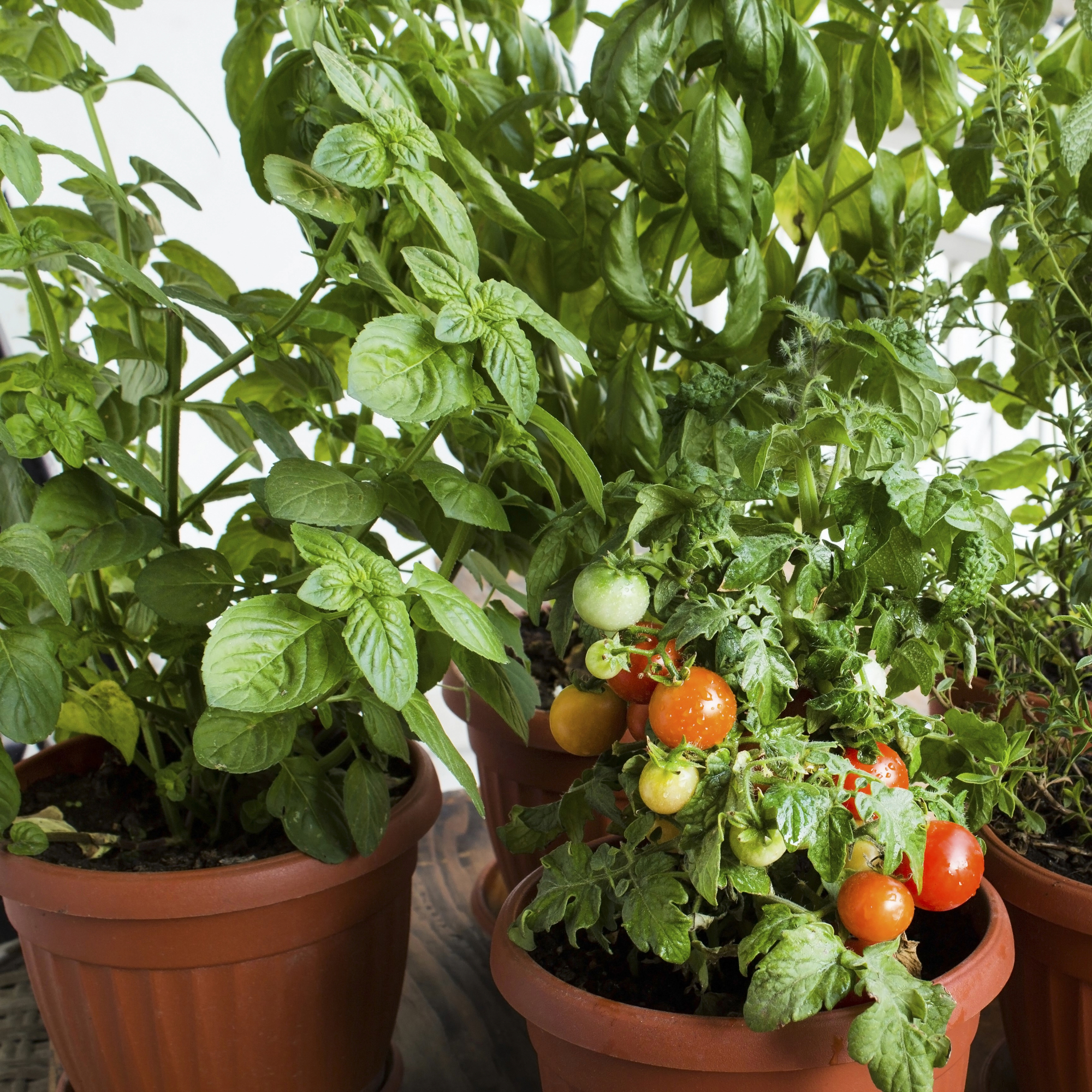
If you've landed on this page about how to grow tomato plants from cuttings, we assume you will have already discovered that growing tomato plants is one of the most rewarding crops to cultivate in your garden or greenhouse.
The best part is that if you already know how to grow tomatoes, growing them from cuttings is a super easy way to double your tomato harvest for free. Plus if you are already pruning your tomato plants, it would be a wasted opportunity not to make use of any of the sucker you're already removing.

'As an arborist, I'm always fascinated by plants' ability to regenerate. Growing tomatoes from cuttings is like giving your plants a clone army, and it's a skill that can save a cherished variety or expand your harvest exponentially,' says Ben McInerney, Certified Arborist & Founder of GoTreeQuotes.com.au.
'Growing tomato plants from cuttings is an easy and effective way to propagate new plants, especially if you want to clone a favourite variety', agrees Nadezhda Yaneva, gardening and plant expert at Fantastic Gardeners.
'You can achieve great results with heirloom varieties like 'Brandywine', which flourish in the summer sun but are also incredibly tasty!'
How to grow tomato plants from cuttings
'You can grow tomatoes by taking cuttings from existing plants in your garden and it is a good way to reuse offcuts', says Graham Smith MClhort, a gardening expert from LBS Horticulture.
Follow these easy steps on how to grow tomato plants for cuttings and multiply your vegetable crop for free.
You will need:
- Established tomato plants
- Sharp clean secateurs
- Fresh tap water
- A small glass or container
- Small potting pots
- Multi-purpose, peat-free compost
- Rooting hormone powder (optional)
1. Choose a healthy cutting
Inspect a healthy and disease-free tomato plant and look for a stem about 4-6 inches (10 x 15 cm) long that is growing between a main stem and a branch. This is called a 'sucker'.
'Using clean, sharp pruners, cut the sucker at a 45-degree angle just below a leaf node. This angled cut increases the surface area for root development, explains Ben McInerney.

2. Prepare the stem
Remove the lower leaves from the stem, leaving only the top two sets.
'This reduces water loss through transpiration and focuses the plant's energy on root development,' says Ben.
'If the cutting is particularly large, you can trim it down to about 15 cm. Optionally, dip the cut end in rooting hormone powder to encourage faster root development, though tomato cuttings generally root well without it.'
3. Place the cutting in water or potting soil
Place the prepared cutting into a glass filled with fresh water or directly into moist potting soil.
'If using water, change it every few days to prevent bacterial growth. If using soil, ensure it's well-draining and keep it consistently moist,' continues Ben.
'Within 2 weeks, you'll see roots forming. It's like watching life emerge from a twig!'
'If you go with water, make sure they're sat in a sunny spot. After a week or two, the plants should be nicely rooted and can be transfer to larger pots, agrees Georgina O'Grady, Managing Director at Evergreen Direct.
'Alternatively, plant the cutting directly in a small pot filled with moist, well-draining potting mix and insert the stem about 5-10 cm deep into the soil, ensuring the leaves are above the surface.'

4. Care and monitor
'If rooting in water, wait until the roots are at least 3-5 cm long before transplanting the cutting into the soil', instructs Nadezhda Yaneva.
'If rooting in the soil, you can check for root development after 2-3 weeks by gently tugging on the cutting—if you feel resistance, roots have formed.
Water the soil lightly to keep it moist but not soggy cover the pot with a plastic bag or dome to create a humid environment, and place it in indirect sunlight.'
When is the best time to take tomato plant cuttings to propagate?
When considering how to grow your own vegetables, it's wise to research which months to sow seeds, plant seedlings and when to propagate, as temperature and daylight play a huge part in plant health and harvest success.
Tomatoes originate from southern hemisphere countries with warm climates and so require warm and sunny environments to flourish.
'The best time to take cuttings from a tomato plant to propagate is during May and June, as the plant will often need its side shoots removed in this period to help promote growth and redirect the plant's energy,' advises Graham Smith MClhort.
FAQS
Can you really grow tomato plants from cuttings?
Yes, you certainly can and it's super simple. For best results every time choose a healthy sucker, cut it off at an angle and remove lower stem leaves, leaving just two at the top. Transfer into water or plant directly into potting soil.
Will tomato plants root in water?
When removed correctly, tomato suckers will root in water after around two weeks.
'If using water, change it every few days to prevent bacterial growth,' explains Ben McInerney, Certified Arborist & Founder of GoTreeQuotes.com.au
What's the best way to encourage tomato plants to grow from cuttings?
The best place to encourage tomato plant cuttings to root is in a greenhouse or warm, light environment.
'Create a humid environment for the cutting. I use a clear plastic bag to create a mini-greenhouse effect, which dramatically increases success rates', continues Ben McInerney.
And there you have it, seeing as tomato plants are regarded as a contender as one of the best plants to grow from cuttings, it really is that simple.







